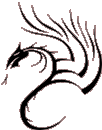POINT: DU-16 (GOVERNING VESSEL-16)
| English: | Palace of Wind |
| Also Known As: | Wind's Palace Wind's Dwelling Wind Palace Wind Mansion Guizhen Ghost Pillow |
- 1 cun above the posterior hairline in the depression inferior to the external occipital protuberance on the posterior midline.
- 1 cun above the middle of the natural hairline at the back of the head, in the depression directly below the occipital protuberance.
- Directly below the external occipital protuberance, in the depression between the bilateral origins of the trapezius muscle, 1 cun within the hairline.
- On the nape of the neck, in the depression directly below the external occipital protuberance.
Note: the external occipital protuberance is found as the bony prominence at the base of the skull on the midline. In some people, it may be difficult to feel. The point lies approximately 1 cun above the posterior hairline. - 1 cun directly above the midpoint of the posterior hairline, directly below the external occipital protuberance, in the depression between the m. trapezius of both sides.
- Straight insertion, 0.5 to 1 cun.
- Caution: Avoid deep insertion.
- Perpendicular insertion, slightly inferiorly., 0.5 to 1 cun.
- Caution: the spinal canal lies between 1.5 and 2 cun deep. to the skin surface, varying according to body build. Deep perpendicular or superior oblique insertion is strictly contraindicated.
- Puncture perpendicularly 0.5 to 0.8 cun. Deep puncture is not advisable. The medullar bulb is in the deep layer. Special attention should be paid in acupuncture.
- Sea of Marrow point
- Meeting point of the Yangwei channel
- Sun Si-miao Ghost point
- Window of Heaven point
- Eliminates Wind
- Nourishes the Sea of Marrow
- Benefits the head and neck
- Calms the Shen
|
|
GB-20 |
SI-16 |
REN-24 |
The hundred disorders due to injury by Cold. |
Throat pain |
Loss of voice Stiffness of the head and nape with difficult rotation |
DU-15 |
||
Windstroke Flaccidity of the tongue Sudden loss of voice |
Pain of the eyes with inability to see |
Rhinitis with nosebleed |
DU-28 |
UB-13 |
|
Stiffness and pain of the neck with inability to turn the head |
Mania Incessant talking without rest |
Mad walking with a desire to commit suicide |
SI-5 |
DU-2 |
|
Mad walking |
Numbness of the legs |
|
- Deep needling is contraindicated.
- Use moxibustion with caution.
- According to several classical texts, this point is forbidden to moxibustion.
- For Tai Yang Zhong Feng, initially prescribe Gui Zhi Tang. If this causes agitation, needle DU-16 Fengfu and then GB-20 Fengchi, then re-administer Gui Zhi Tang Recovery will follow.
- This point is important for treating both Exterior and Interior Wind.

